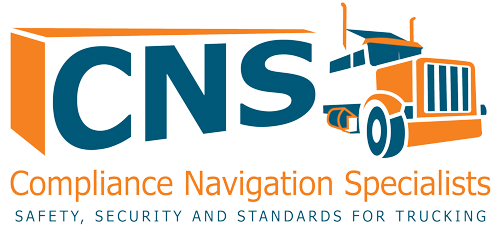The 10 Most Common DQF Violations (And How to Avoid Them)

Every year, DOT auditors uncover thousands of violations related to Driver Qualification Files (DQFs). For many carriers, these mistakes can trigger hefty fines, audit failures, or worse—a poor safety rating that puts contracts and insurance rates at risk.
Whether you manage a small fleet or a multi-state operation, understanding the most common DQF violations is key to staying compliant and audit-ready.
In this article, we’ll break down the 10 most frequent violations found in driver files and provide expert tips to help you avoid them.
1. Missing Medical Examiner’s Certificate
- Violation: Driver lacks a valid medical card or it has expired.
- Why It Happens: No system for tracking expiration dates or verifying updates.
- How to Avoid It: Use automated reminders and digital file management to track expiration dates. CNS Connect alerts you before documents expire.
2. Incomplete or Missing Employment Application
- Violation: The driver’s employment application is missing from the DQF or is incomplete, lacking required information such as: Full legal name, address, and date of birth; Detailed employment history for the past 3 years (or 10 years for CDL drivers); Driving experience, accident history, and traffic violations; Driver’s signature and date
- Why It Happens: Poor onboarding processes with no standardized checklist for hiring or rushed hiring as companies try to quickly fill driver positions skip proper documentation.
- How to Avoid It: Use digital onboarding systems that prevent submission until all required fields are complete or use CNS driver file management services.
3. Incomplete Driver Application
- Violation: Application is missing employment history or signature.
- Why It Happens: Rushed onboarding or lack of standard application forms.
- How to Avoid It: Require standardized forms and review all applications before filing. CNS ensures every DQ file is verified before acceptance.
4. No Previous Employer Verification
- Violation: Carrier did not contact previous employers within 30 days of hire.
- Why It Happens: Employers are hard to reach or the process is skipped due to time constraints.
- How to Avoid It: CNS handles the entire background inquiry process and logs all communication for DOT proof.
- Related: Clearinghouse Pre-Employment Check Does Not Stop Other DQF Queries
5. Missing Pre-Employment Drug Test Result
- Violation: No documented result of the required pre-employment drug test.
- Why It Happens: Testing was delayed, or documentation wasn’t stored properly.
- How to Avoid It: Always test before allowing the driver to operate a CMV. CNS drug consortium includes pre-employment testing and digital file upload.
6. Expired CDL or Incorrect Endorsements
- Violation: Driver operates with an expired CDL or lacks necessary endorsements.
- Why It Happens: No license tracking process or misunderstanding of job-specific endorsements.
- How to Avoid It: CNS Connect monitors CDL status and flags endorsements that don’t match job requirements.
7. No Road Test Certificate or Equivalent
- Violation: Carrier lacks documentation that driver passed a road test or equivalent certification.
- Why It Happens: New hires assumed qualified without verification.
- How to Avoid It: Ensure every driver has passed a road test or presents acceptable CDL/PSP history. CNS audits each file for road test certification.
8. Lack of Annual Certificate of Violations
- Violation: Carrier did not obtain a signed annual list of driver’s violations.
- Why It Happens: Annual review process not implemented.
- How to Avoid It: Use a DQF tracking system or CNS DQF service to automatically flag due dates and upload signed certificates.
9. No FMCSA Clearinghouse Query
- Violation: Carriers are required to perform a clearinghouse pre-employment or annual query on all drivers or face a fine of up to $2,500 per offense if non-compliance surfaces in a compliance review or safety audit.
- Why It Happens: New regulations misunderstood or staff not registered.
- How to Avoid It: CNS performs all required Clearinghouse queries and provides proof for your DQF.
10. Disorganized or Missing File Documentation
- Violation: Files are incomplete, disorganized, or inaccessible during a DOT audit.
- Why It Happens: Paper filing systems or no dedicated file manager.
- How to Avoid It: Use CNS Connect or our DQF Management service to digitize and organize all driver files in a secure, audit-ready portal.
Don’t wait for an audit to expose your weak spots.
Avoiding these common violations comes down to having a system in place—one that keeps your documents current, accessible, and compliant.
Whether you’re overwhelmed by the paperwork or unsure where to start, CNS offers full-service driver file management to keep your fleet audit-ready at all times.
Our DQF Membership services are priced per driver and include driver file management, auditing of driver files, online cloud storage, regular expiration notifications, and audit assistance on driver files.
You can join the membership now for your drivers or contact CNS at 888.260.9448.
Questions about DOT Compliance, Licensing, Audits, Programs, etc.?
Our DOT Specialists are here to help!
What are you searching for?
Is DOT Compliance your Top Priority?
Our DOT Compliance Programs ensure it is your top priority and keeps your business running.
Related Services
Subscribe to our Monthly Newsletter
Receive the latest transportation and trucking industry information about FMCSA and DOT Audits, Regulations, etc.
Related news
Trucking News
Get the latest trucking news on DOT Compliance, Licensing, Audits, and more!

Legal Work Status and DQ Files: How to Verify a Driver’s Legal Right to Work in the U.S.
Driver shortages are leading more carriers to consider immigrant CDL applicants—but not all are vetted equally. Learn how to verify work eligibility and document it

Why a “Warning” Can Hurt More Than a Citation for New Fleets
For many new or small fleets, getting stopped at a weigh station or roadside inspection can be a nerve-racking experience—especially when you’re trying to maintain

Clearing the Confusion: What a “Driver CSA Score” Really Means
In the trucking world, safety scores are everything. Whether it’s insurance rates, hiring decisions, or DOT inspections, people want to know if a driver is
